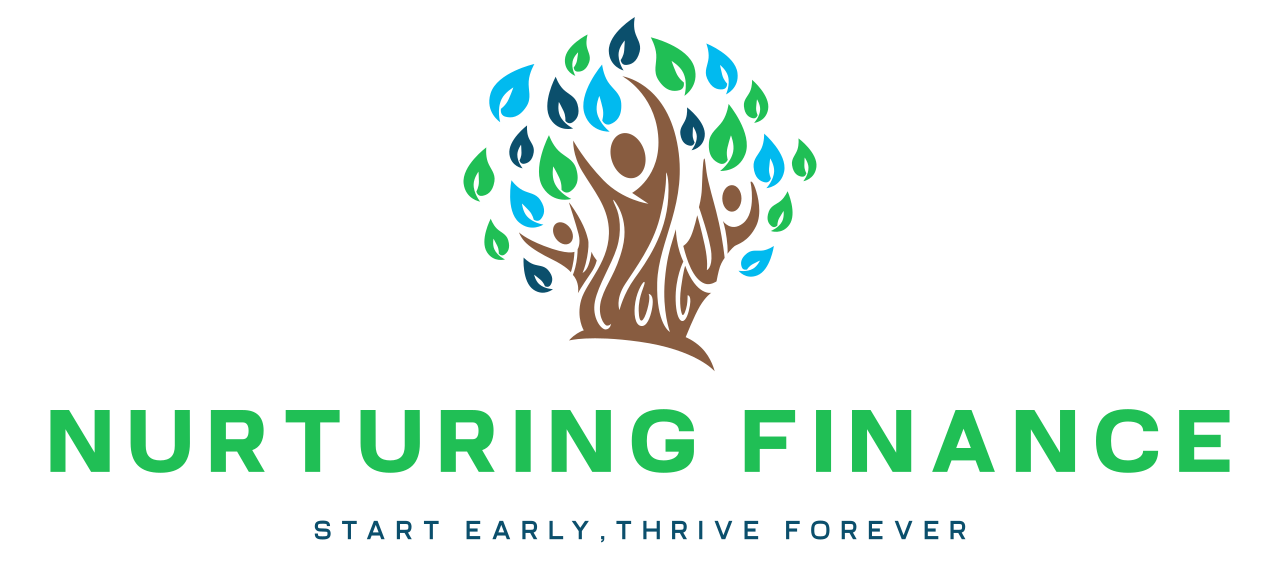I’ve learned that talking to my child about money is one of the most critical things I can do. Teaching them about managing debt is vital. It’s not just about talking to them. It’s showing them how to handle money wisely, from saving to smart credit card use.
So, how do you teach your children about debt?
Explaining debt to children can be made easier by using examples they can relate to in their daily lives. For instance, you can talk about borrowing toys from friends or saving pocket money to buy something later. Interactive activities like budgeting games or role-playing can help kids understand borrowing and the importance of responsible money management. Emphasizing the difference between needs and wants, setting savings goals, and discussing real-life stories of responsible borrowing can further reinforce making smart financial decisions. By using these age-appropriate explanations and activities, we can empower children with the knowledge and skills to manage their finances responsibly from a young age.

Let me share ways to teach your kids about money and debt. I’ll give you simple yet powerful tips. These can help your children avoid a life overwhelmed by debt and enjoy financial freedom instead.
Key Takeaways
- Teach your child the difference between the different types of debt to encourage smart financial decisions.
- Explain debt to children using relatable scenarios that illustrate the concept of interest rates and the need to pay it back.
- Discuss the importance of money and money habits by involving older children in budgeting exercises and credit card usage.
- Help kids understand the significance of a credit report and how it affects their ability to borrow money in the future.
- Encourage your child to develop good money habits early on, including saving money and being cautious about too much debt.
- Foster financial literacy in kids by teaching them the value of research before they spend money.
- Ingrain the concept of debt, so children learn to differentiate between spending on needs versus wants.
Understanding the Basics: Teaching Financial Literacy Early On
As a parent, teaching my kids about money is crucial. Starting early with simple financial principles is key. I talk to them about money’s value and how to earn and save. This helps them learn to manage their finances as they grow.

Introduce the Value of Money
Talking about the
value of money is essential. Kids need to understand what money means before learning about debt. I use examples, like comparing a toy’s cost to
chores or allowance. This helps them see the work behind money and the need to spend it wisely.
Explain the Concept of Earning and Saving
Teaching them about earning before spending is vital. It shows the value of patience over instant satisfaction. I teach them how to earn and save through everyday moments, turning daily tasks into lessons in financial growth.
Incorporate Financial Conversations into Everyday Life
Regular financial conversations are crucial. We talk about saving for vacations or making shopping decisions together. These talks teach them about money management confidently. By discussing finances openly, we prepare them to tackle their financial futures confidently.

How to Teach Your Children About Debt
As a parent, it’s key to teach kids about money, including concept of debt. Financial education is crucial for your child’s growth. It’s important to start teaching your children about money early. I’ll share how I make this topic clear for kids.
To explain debt, I begin with borrowing basics. I say that going into debt means you get money now but pay back later, with extra called interest. This chat about debt is an important one. It helps kids learn about financial responsibility. I focus on being smart with money.
I then help kids understand that their is different kinds of debt. Educational debt can be a wise tool. For example, student loans can be a good investment into their future. But borrowing too much can cause trouble. We talk about this together, which helps teach kids about debt.

Also, kids should learn money management early. I share stories about borrowing’s risks and benefits. I stress saving for big buys instead of using credit. This helps encourage your child to think about their choices.
- I show choices between saving or borrowing for something they want.
- I give them money to show spending now versus saving for later. This teaches the value of waiting.
- We role-play as lenders and borrowers. This shows how debt works.
Most importantly, I stress the value of being debt-free. Even avoiding small debts can teach good vs. bad borrowing habits. As a parent, showing good money habits matters as much as talking about them.
| Concept |
Description |
Family Activity |
| Borrowing |
Using someone else’s money with a promise to return. |
Small loan with terms for a household chore. |
| Interest |
The cost of borrowing money. |
Simulated bank account showing interest accumulation. |
| Debt Management |
Controlling how much money you owe to others. |
Creating a repayment plan for a real or imagined debt. |
Teaching about debt is a lifelong gift for my child. We have open talks and navigate financial education together. By teaching them carefully, we prepare them to be thoughtful with money and manage finances well.
Creating a Culture of Smart Spending and Borrowing
As a parent, I aim to teach my kid to be wise with money. They need to learn how to spend smartly, know the difference between a need and a want, understand borrowing, and see how interest rates make a difference. We’ll dig into these areas to help the next generation avoid credit debt and impulse buys.
Demonstrate the Difference Between Needs and Wants
Talking about money priorities is a great way to teach kids. A hands-on method lets them see what’s truly necessary and what’s not. Making a budget with ‘Needs’ and ‘Wants’ lists teaches them smart spending.
- Needs might include groceries, school supplies, or rent.
- Wants could be the latest smartphone, designer clothes, or video games.

Teach the Impact of Interest Rates on Borrowing
Not knowing about interest rates can cause financial issues. I explain how credit card debt piles up with high rates, and how loans can become heavy burdens. Learning about interest rates makes my kids think twice before borrowing.
| Loan Amount |
Interest Rate |
Years |
Total Interest Paid |
| $1,000 |
5% |
1 |
$50 |
| $1,000 |
20% |
1 |
$200 |
Encourage Thoughtful Purchases and Avoiding Impulse Buying
I promote thought before buying to avoid regrets and debt. Avoiding impulse purchases is key. I teach my children to think about each buy, checking if it fits their financial plan and necessity.
- Wait for 24 hours before making a purchase.
- Consider the cost per use of an item.
- Evaluate if it’s a momentary desire or a lasting need.
Practical Lessons: Allowances, Jobs, and Budgeting
Teaching kids about money is more than talk. It involves real-life lessons they won’t forget. Giving allowances, supporting
part-time jobs, and helping with budget plans are key. These steps show kids the real worth of money and managing it as they grow.
Assign Age-Appropriate Financial Responsibilities
Allowances are a great starting point for kids to learn about finances. Setting clear rules for what their money is for teaches them to budget. Young kids can earn by doing simple tasks, like cleaning their room. This teaches them responsibility. Older kids can handle more, like paying family bills with their money. This prepares them for the future.

Inculcate the Habit of Budget Planning
Budgeting isn’t just for grown-ups. Kids can learn a lot from it, like setting spending limits. I encourage my kids to split their allowance into savings, spending, and giving. Tools like charts help make it fun and clear, especially for kids who like seeing things visually.
Guide Through Their First Earnings and Savings Account
The value of
earning money is a significant lesson. Jobs like babysitting or summer internships teach responsibility. I help them open their first
savings account. We talk about saving for the future and how interest works. Setting financial goals helps them see the benefit of saving.
FAQ on How to Teach Children About Debt?
1. How can I teach my kids about debt?
To
teach kids about money, including debt, start by explaining the concept of borrowing money and paying it back with interest. Use real-life examples, such as getting a loan from a bank or using a credit card responsibly.
2. Why is it important to educate kids about debt?
It’s crucial to
teach your child the consequences of irresponsible borrowing early on. Understanding the implications of debt can help them make informed
financial decisions in the future and avoid
bad debt.
3. What are the differences between good debt and bad debt?
Good debt is used to invest in assets that can increase in value or generate income, like a mortgage for a home or student loans for education.
Bad debt, such as high-interest credit card debt for unnecessary purchases, can lead to financial struggles.
4. How can I help my kids understand the value of money in debt?
One way is to demonstrate how debt and interest work using simple examples. Show them the impact of borrowing money to buy something immediately versus saving up and paying in full to avoid additional costs.
5. What are some practical ways to teach kids about credit card debt?
When
teaching kids about debt, explain how
credit card debt accrues with high interest rates and emphasize the importance of paying off the full monthly balance to avoid accumulating debt.
6. How can I talk to my children about financial concepts like interest rates and credit scores?
Start by breaking down complex terms like
interest rate and
credit score into simple, relatable terms. Use everyday examples to illustrate how these factors affect borrowing and financial decisions.
Conclusion
Teaching kids about money is more than just numbers. It’s a big role that shapes their future. As a parent, I promise to teach my kids about financial education. This guide has shown ways to
teach financial responsibility. It also helps guard against the risks of debt. Handling money poorly can affect them for life.

Learning to spend wisely and budget are key lessons. These lessons help prepare for a future of smart choices. I try to be a good example. I talk about
money often and use these practical lessons. This helps my family see
smart money habits as normal.
I dream of a future where my kids handle money well. Teaching them is my responsibility and joy. It leads to responsible adults who understand money’s value. I hope this guide helps you and your kids find financial stability and security.


